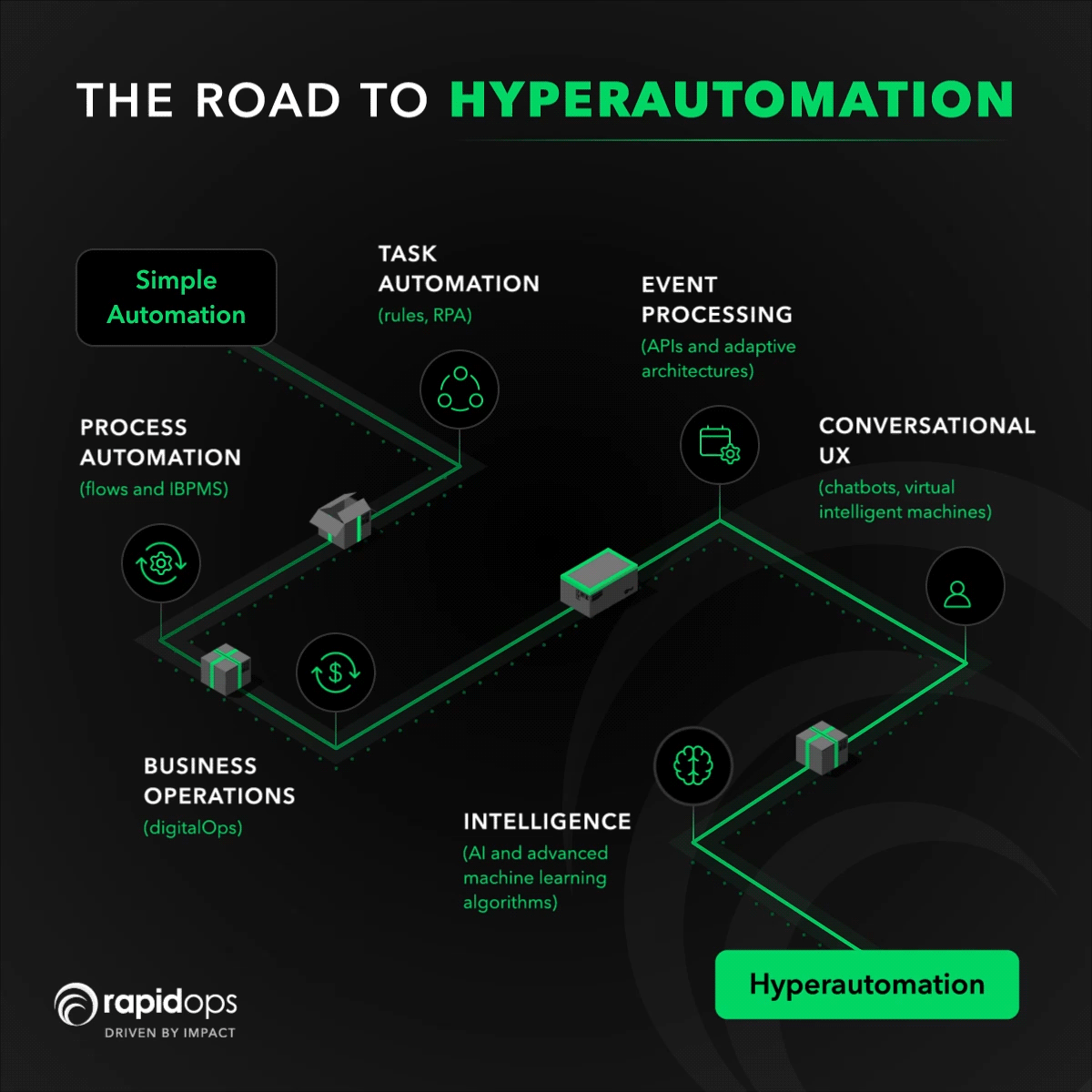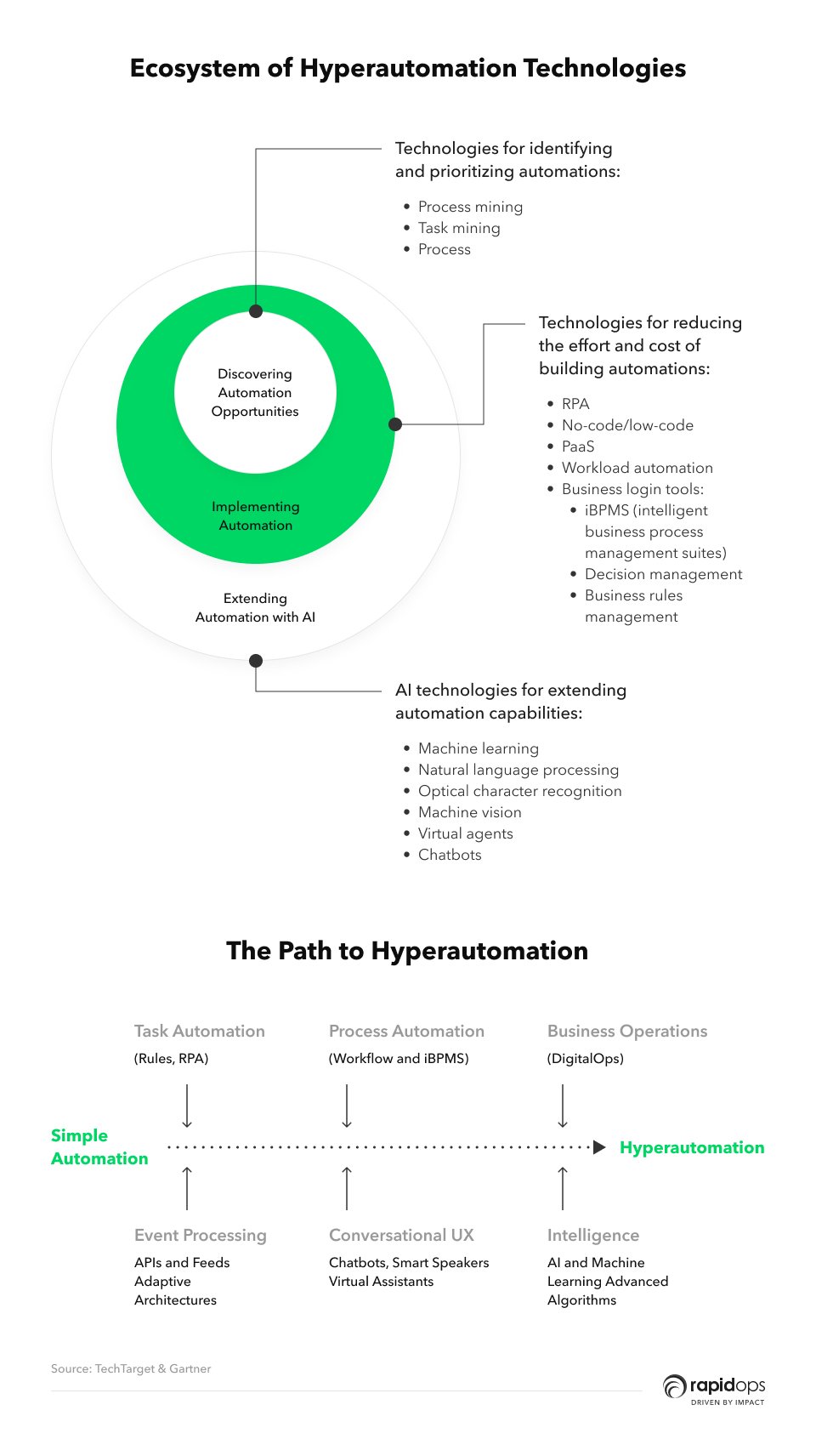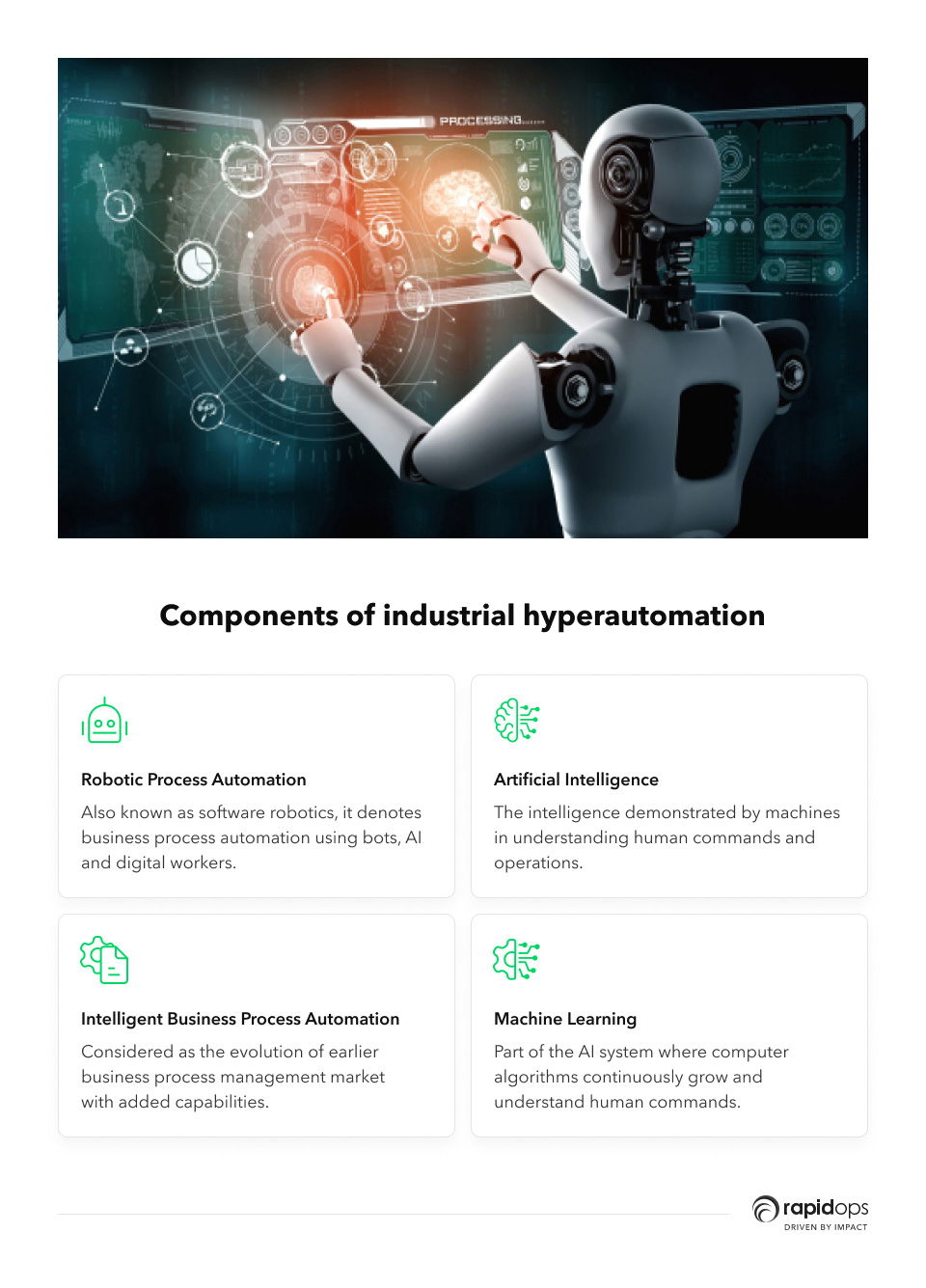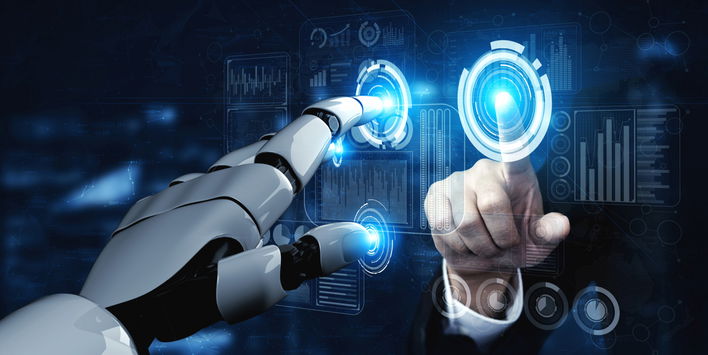While digital technologies are dramatically reshaping modern enterprises, some businesses are pursuing large-scale change efforts to realize the full potential of implementing digital transformation. Some of them have kept digital transformation on the back burner. According to recent surveys, implementing a solid digital transformation across the business process depends upon individual organizational needs.
But what next? This question is critical to stay relevant in the ever-growing and changing market. Technology is growing at an incredible pace and heating up the enterprises with opportunities to disrupt and enhance the entire business operations.
The next phase of digital transformation
The world economy is trying to pull away from the backlash pandemic brought to the market. Digital transformation has been the buzzword for the past few years now. But, with changing times and rising opportunities, how can you push the limits of digital transformation in 2021?
The hyperautomation market will experience rapid growth (USD 22.84 billion) by 2027
Enterprises are already implementing their digital transformation initiatives, and end-to-end automation takes things a step further. This article will help you gain a comprehensive insight into hyperautomation. You will also understand its necessity for enhancing the modern business process.
Business Process Automation - A vital tool for driving enterprise agility
You have pre-existing processes that need to be regularly evaluated and improved for achieving a profitable bottom line (vital for every business’s survival in the market). Your business process efficiency is defined by how efficiently you get the output with better ROI.
Automating traditional business processes will help you adopt new operating models that delight customers and supercharge performance. If decision-makers know the true potential of implementing automation in their process, they can stay ahead of evolving customer demands and embrace continuous change.
Comprehensive insight into achieving end-to-end automation
Businesses need to meet a set of quotas and benchmarks decided for the fiscal year. Fulfilling these benchmarks needs the achievement of specific end goals with higher efficiency. Although Gartner coined the concept of hyperautomation, it has become a driving force for leading the digital transformation race. Gartner also had identified hyperautomation as one of the top 10 trends in 2020 and had predicted that merging technologies would reduce 69% of the manager’s workload by 2024.
What is hyperautomation?

The term hyperautomation is an end-to-end business-driven, disciplined approach that businesses adopt to automate legacy business operations and processes.
Hyperautomation is an extension of automating repetitive tasks and manual activities carried out by people that organizations use to supercharge business operations with intelligent process automation for speed, productivity, and innovation.
By combining cutting technologies like artificial intelligence (AI), machine learning (ML), and robotic process automation (RPA), hyperautomation helps companies with enhanced digital operational excellence and accelerated productivity, which was not possible with legacy BPA. Hyperautomation process implementation involves the following points that businesses need to consider:
- Identifying what to automate
- Choosing the appropriate automation tools
- Driving agility through automated processes
- Extending automation capabilities with AI and machine learning
Why do businesses need to adopt hyperautomation?
While typical automation helps businesses avoid dependency on human assistance, hyperautomation includes an extra layer of robotic intelligence, making the overall processing much swifter.
With hyperautomation, organizations can create virtual helpers (workers) that perform repetitive organizational tasks so the actual employees can improve the performance of their core activities. Combining RPA and AI helps executives merge diverse business applications, work with raw and processed data, and drive agility through the reuse of the automated processes.

Hyperautomation is a business-driven approach for enterprises that work in harmony with cutting-edge technologies to automate complex business processes where automation was never possible before. An effective hyperautomation practice helps business owners identify the following:
- What work to automate
- Choose the appropriate automation tools
- Drive agility through the reuse of the automated processes
- Extend process capabilities with diversified AI and machine learning
In conjunction with cost-saving, efficiency, and productivity enhancement, hyperautomation helps businesses capitalize on their comprehensive data. Hyperautomation combines multiple technologies, tools, or platforms, including:
- Artificial intelligence (AI)
- Machine learning
- Event-driven software architecture
- Robotic process automation (RPA)
- Intelligent business process management suites (iBPMS)
- Integration platform as a service (iPaaS)
- Low-code no-code tools
- Packaged software
- Decision, process, and task automation tools
Combining technologies is the key to unlocking an intelligent process automation
Hyperautomation takes different technologies and combines them to provide an intelligent and unified system for end-to-end automation.
Modern businesses constantly look for digital opportunities to increase business process efficiency and maximize their profits. C-suite executives need a detailed plan for executing the merger of technologies to orchestrate complex, multiple tasks with less human effort.
Modern business can achieve an agile process with hyperautomation
One thing that plays a significant role in hyperautomation is data. All the technologies mentioned above need data for providing valuable insights and making the best decision for their business.
With the help of end-to-end automation, business owners can augment their workers' abilities while decreasing cost and human error. Hyperautomation nullifies silos and increases organizational agility for achieving the full potential of the digital transformation initiative.

Major components of hyperautomation
Let’s discuss some of the major components of hyperautomation that business owners must be familiar with.
1. Robotic Process Automation (RPA)
RPA uses computer software for performing repetitive and rule-based activities like payroll processing, data entry, etc. This system enables information exchange between two or more software platforms. RPA performs a single task or carries out a short process that does not essentially require human intervention.
2. IBPM
IBPM combines business process management (BPM) and complementary technologies such as AI (Artificial Intelligence). This management system assists businesses in automating the process from end to end, where data is continuously collected, shared, and stored. IBPM enables workflow automation on a much higher- level.
3. Artificial Intelligence (AI)
With Artificial Intelligence, a computer can efficiently perform the tasks generally carried out by humans. It involves continuous learning, planning, speech recognition, and giving resolutions for problems.
4. Machine Learning (ML)
This is where Machine Learning gets involved in hyperautomation. ML enables a business to apply learning and programming improvements to access data and observe how it changes over time. ML helps provide data-backed validation to remove operational inefficiencies.
How can a business benefit from the implementation of hyperautomation?
Hyperautomation is incredibly beneficial to organizations that still operate with limited automation or with legacy business operations. Once these organizations adopt hyperautomation, they will realize tangible results through digital process automation and infrastructure automation. This will allow them to make their business operation connected, agile and efficient. Every digital innovation is done with profit in mind. Businesses can achieve profitability via
- intelligent automation of complex business processes
- digitalization of legacy business processes
- enhancement of present activity output
Below, we will discuss the benefits hyperautomation brings to businesses.
1. Seamless integrations
Having faster access to data and smoother data sharing across multiple apps equals efficient integrations.
For instance, you are using an HR Payroll application for salary payments. With the help of hyperautomation, you can connect with other apps used in different processes, such as employee hiring and onboarding.
2. Real-time accessibility
Hyper intelligent automation assists managers in understanding the process in real-time. They can access open requests, see the current status of projects, and monitor a project's ownership. Such details help in faster resolutions and decision-making.
3. Eliminate silos and process deficiencies
Legacy business processes are still sitting atop siloed datasets and disconnected networks of teams. Digitizing and automating these teams will unify the data repository allowing automation of the entire business process. Starting from the point a client requests for a quote to the end where the requirement gets fulfilled.
4. Improved productivity
With end-to-end automation, businesses can enjoy a boost in their productivity. Post-pandemic, remote workforce has resulted in the availability of lesser staff at facilities. This has hit various industries, and they struggle to keep the pace of their process as efficient as they desire to.
End-to-end automation enhances the potential and capabilities of employees by automating the redundant tasks and enabling their focus on more value-adding activities. With the help of hyper-intelligent automation, managers can manage digital signatures and automatic profile or project storage.
Concluding thoughts: Implementing hyperautomation is more critical to business than ever
Hyperautomation is being adopted faster by companies to address the challenges of data silos, inefficient business processes, disconnected teams, and much more. By automating and accelerating repetitive processes, companies benefit from increased consistency and quality process, reducing operational costs.
The diverse needs and goals that are motivating business leaders to adopt hyperautomation include:
- Needing of keeping up with market demand
- Legacy work processes resulting in latency
- The inability of corporate IT due to lack of resources or knowledge
- Meeting certain regulatory compliance
- Consistent production flow and higher quality products with minuscule human error
Hyperautomation is becoming a part of every business’s strategic deployment framework.
At Rapidops, our data engineers and scientists have helped global brands discover, build and monetize data-driven business opportunities. We help our clients build analytics products, platforms, and solutions that deliver actionable intelligence at a massive scale from data preparation, transformation, integration to data science, and interactive visualizations.
You can get in touch with Rapidops Experts to know how to combine multiple technologies and enhance business processes.

Saptarshi Das
Content Editor
9+ years of expertise in content marketing, SEO, and SERP research. Creates informative, engaging content to achieve marketing goals. Empathetic approach and deep understanding of target audience needs. Expert in SEO optimization for maximum visibility. Your ideal content marketing strategist.
What’s Inside
- The next phase of digital transformation
- Business Process Automation - A vital tool for driving enterprise agility
- Comprehensive insight into achieving end-to-end automation
- What is hyperautomation?
- Why do businesses need to adopt hyperautomation?
- Combining technologies is the key to unlocking an intelligent process automation
- Major components of hyperautomation
- How can a business benefit from the implementation of hyperautomation?
- Concluding thoughts: Implementing hyperautomation is more critical to business than ever

Let’s build the next big thing!
Share your ideas and vision with us to explore your digital opportunities
Similar Stories
- Strategy
- undefined Mins
- February 2017

- Strategy
- 19 Mins
- August 2023


Receive articles like this in your mailbox
Sign up to get weekly insights & inspiration in your inbox.

